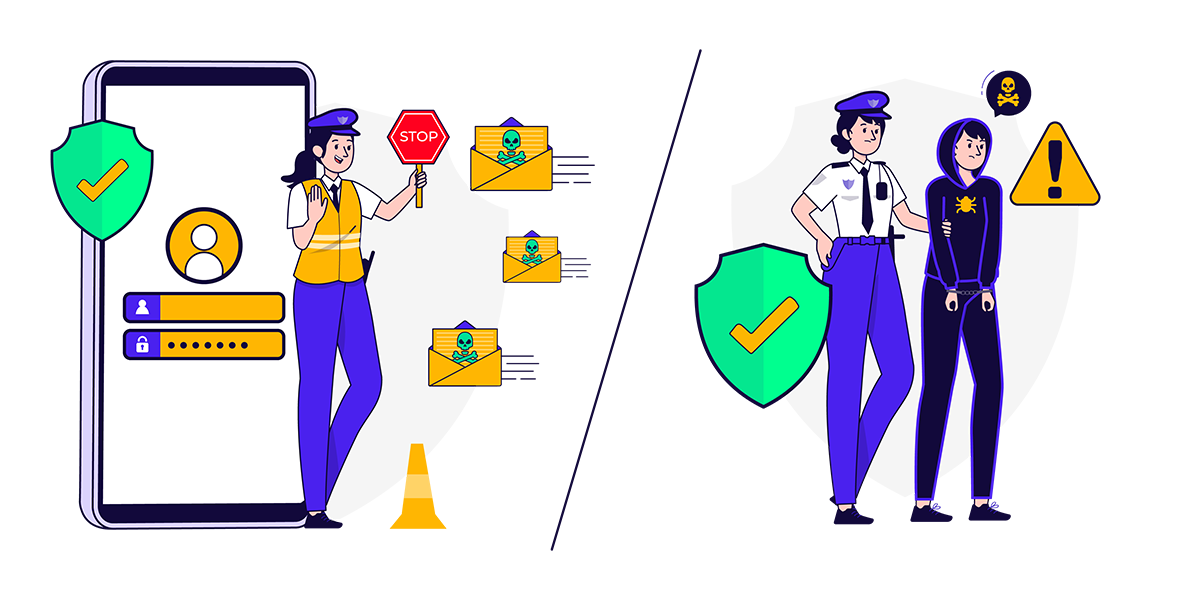Checking your bank account in a café or sending a quick work email from the…

Online safety for kids: A comprehensive cybersecurity guide for parents
Today’s reality is we have the entire world in the palm of our hand and now our children are growing up in this digital reality. By age sixteen, most Australian kids have their own devices, with some as young as five surfing the web unsupervised.
Online safety for kids has become a major concern of our times. Our children are spending nearly two hours daily in online worlds we barely understand – a place where risks exist in seemingly innocent apps and games.
Our kids are walking around with their hearts on their sleeves and their personal information on their screens. They’re unknowingly putting themselves at risk because they haven’t been taught the dangers. And make no mistake – cybercriminals don’t see age, they see opportunity.
As parents, we teach our kids to look both ways before crossing the street. Now, it’s time to teach them to look, think, and protect before they click. Cybersecurity isn’t just about protective software or complicated passwords – it’s about arming our children with the awareness and habits they need to operate in this digital realm safely.
Young, online, and vulnerable
Tech-savvy youth are still prime targets for scammers, as they lack the scepticism needed to spot sophisticated scams. While Facebook and Instagram currently lead in scam reports and losses, platforms like Snapchat and TikTok closely follow.
In a study involving parents of 13-17-year-olds, over 25% reported social media scams had caught their teens out, mostly related to buying or selling products or services through fake websites or online marketplaces.
Online shopping scams emerge as the biggest threat, accounting for over 14% of all reported scams and nearly 12% of financial losses for those under 25. Young users are increasingly falling prey to deceptive emails, fake websites, and malicious downloads, leading to data theft, financial fraud, and device compromise.
The dark side of digital connections
Cyberbullying is a major concern, extending beyond school hours into social media and messaging platforms, which can have serious effects on mental health and academic performance.
Online safety for kids also centres on predators. Another massive issue where sophisticated grooming techniques are deployed across chat rooms, social media, and gaming platforms, often posing as peers, slowly building trust before exploiting vulnerabilities.
Australia’s eSafety commission reports 44% of young people report having a negative online experience in the last 6 months. This includes 15% who received threats or abuse online.
Cyberbullying and predation effects can be long-lasting. Victims may struggle with trust issues, self-esteem problems, and social anxiety well into adulthood. In severe cases, these experiences lead to self-harm or suicidal thoughts.
Open communication: Internet safety conversations
It’s up to parents to improve their tech literacy to understand what their children are potentially being exposed to so you can talk to them early on. Keep the communication lines open and create a space where children can speak freely without worrying about getting in trouble or losing their tech privileges.
Show genuine interest in their online world – ask about their favourite apps or YouTubers. When you hear about cyber incidents in the news, use these as conversation starters. Maybe once a week you can casually chat about what’s been happening online. Give them your full attention and validate their experience. Share your own online experiences to keep the conversation flowing and help them feel comfortable coming to you.
Setting up guardrails and teaching smart online habits
There are some ways parents can protect their children in this brave new world.
Parental controls and privacy settings
Essential for creating age-appropriate boundaries, most devices and platforms have built-in tools to filter content, set screen time limits, and monitor app downloads. Use child-friendly search engines and browsers and consider installing a proactive browser security that detects malicious links and downloads and alerts users before proceeding.
Family internet rules
This could entail discussing agreements on device usage, determining acceptable content access, and establishing guidelines for online behaviour. Reiterate the importance of never sharing personal info without parent approval and only talking to people you know in real life.
Digital literacy
As essential as homework, children now need to identify trustworthy sources and learn to spot ads and avoid clicking on them. Encourage curiosity about who created the content and verifying information elsewhere. Advise children to ask parents before downloading anything from unknown sources, avoid location sharing and to think before posting – once it’s online, it’s there forever.
Recognising red flags
This could be unusual requests for personal info, pressure to keep conversations secret, or simply anything that makes them feel uncomfortable. Emphasise that it’s always okay to step away and ask an adult if something doesn’t feel right.
Trusted sources for cybersecurity education
The eSafety Commissioner’s website offers a wealth of information, education and resources for different age groups for online safety, including reporting tools.
Australian Cyber Security Centre (ACSC) provides comprehensive cybersecurity advice for individuals and businesses offering updates on current cyber threats and free cybersecurity awareness training
ThinkUKnow Australia is a partnership between law enforcement and industry partners that has a particular focus on child sexual exploitation. The site includes notable offerings such as parent presentations on online safety, resources for schools and teachers and age-appropriate advice for children and teens.
Scamwatch Run by the ACCC provides information about how to recognise, avoid and report scams.


